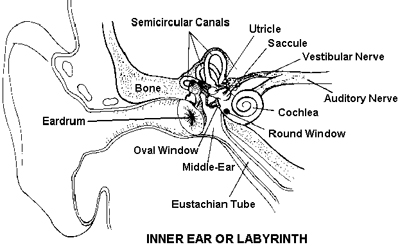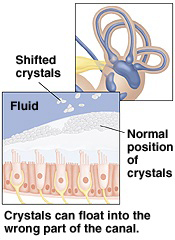Vestibular Rehabilitation

The following conditions may be improved with physical therapy:
• Peripheral vestibular dysfunction
• Central vestibular dysfunction due to traumatic brain injury or cerebral vascular accident
• Benign paroxysmal positional vertigo (BPPV)
• Dizziness or imbalance that is associated with neurological conditions
• History of falls or near falls due to gait deviations or weakness
The Vestibular Rehabilitation Program at Success Physical Therapy and Balance Center is designed to decrease symptoms of vertigo or other forms of dizziness, improve balance, and enhance visual following and gaze stability for people with symptoms due to vestibular and non-vestibular reasons. Patients who have complaints of dizziness and/or imbalance due to varying diagnoses are appropriate for our program.
Symptoms
Vestibular disorders occur frequently and can affect people of all ages and all walks of life. The most frequently reported symptoms of vestibular disorders are dizziness, unsteadiness or imbalance when walking, vertigo, and nausea. Because the vestibular system interacts with many other parts of the nervous system, symptoms may also be experienced as problems with vision, muscles, and thinking, and memory. In many cases, the underlying cause of a vestibular disorder cannot be determined.
In addition, people with vestibular disorders may suffer headache and muscular aches in the neck and back, increased tendency to suffer from motion sickness, and increased sensitivity to noise and bright lights. Patients with vestibular disorders often report fatigue, loss of stamina, and an inability to concentrate. Difficulty with reading and speech may occur during times of fatigue.
Benign Paroxysmal Positional Vertigo (BPPV)

Benign Paroxysmal Positional Vertigo (BPPV) causes dizziness due to debris which has collected within a part of the inner ear. You can think of this debris as "ear rocks." Chemically, ear rocks are small crystals of calcium carbonate. They are derived from structures in the ear called "otoliths" that have been damaged by head injury, infection, or other disorder of the inner ear, or degenerated because of advanced age.
The symptoms of BPPV include dizziness or vertigo, lightheadedness, imbalance, and nausea. Activities which bring on symptoms will vary in each person, but symptoms are almost always precipitated by a position change of the head or body. Getting out of bed or rolling over in bed are common "problem" motions. Some people will feel dizzy and unsteady when they tip their heads back to look up; and for this reason sometimes BPPV is called "top shelf" vertigo. An intermittent pattern is the usual situation. BPPV may be present for a few weeks, then stop, and then come back again.
The original cause remains unknown in about half of the people with BPPV. In the other half, several kinds of events or conditions are thought to cause the episodes. Among the known causes, the most common among people younger than 50 is head injury. Among older people, it is it is degeneration of the vestibular system of the inner ear.
For more information, visit the Vestibular Disorders Association www.vestibular.org.
Back to Our Services
If you have any questions please call us at (310) 325-0800, or email us at SuccessPT@att.net.
|